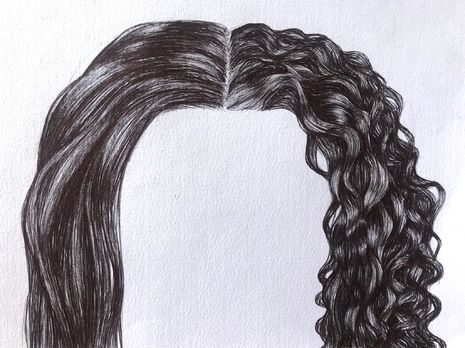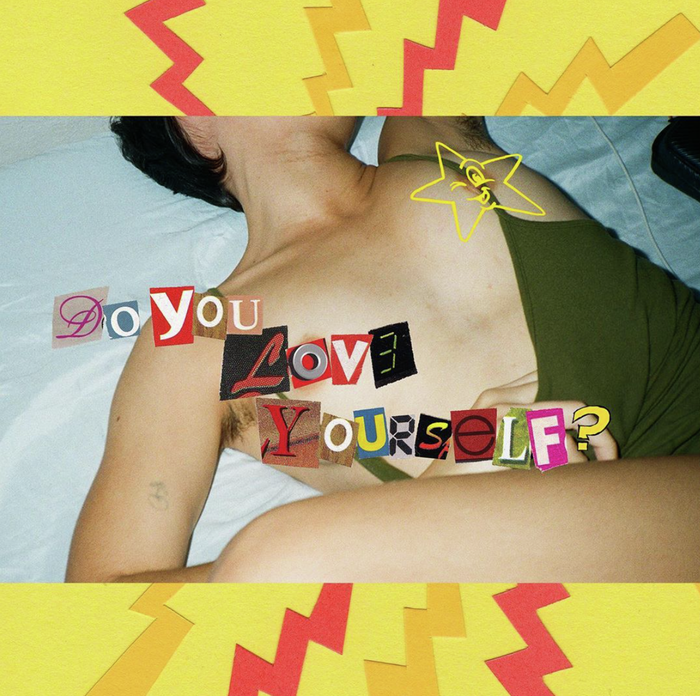Through the Looking Glass: hair and my racial identity
“For many, especially women of colour, the internal war of identity is enacted on our outer being, without regard for the scorched earth we leave on our bodies” writes Kiara Sarronwala

“I could chronicle my journey of self-love and self-acceptance through my journey with my hair.” – Tracee Ellis Ross
When I first heard that sentence aloud, I felt the universality of my plight in using my hair as a tool to assimilate, conform, and emulate, just as many women of colour do.
The mistreatment of my hair began when it was still under the jurisdiction of my mother, whose own was chemically straightened, when I was a young Indian child in Singapore. The tight ringlets that had formed in my infancy were brushed and amassed into a frizzy cloud; all traces of corkscrew curls erased, and with them the vision of what my natural hair was supposed to look like. The improper care that left my hair without shine and silkiness would one day lead me to share in my mother’s pursuit of perfection, finding comfort and results in straighteners. The blissful ignorance that came with young age meant I was not conscious of how my bushy hair was an anomaly among the straight and thin locks of my predominantly East Asian and Caucasian classmates, especially given the small but important population of brown girls.
Leaving the safety of Singaporean diversity for a village outside Geneva and the inevitable insecurities of adolescence is what changed my relationship with my hair. While my new school was wonderful in many ways, it also exposed me to the condition of ‘the other’, as I was often the only person of colour in a classroom, and one of the handful who looked drastically different to my peers. I felt my difference in the food I ate, in the ‘jokes’ my friends would make at my expense, and my upbringing. I began concealing the things about me that would draw attention to the fact that I was, to put it simply, not white. I insisted on only bringing sandwiches to school, mimicked the way the girls dressed, and began attaching shame to the things that made me Indian.
One of the ways in which I attempted to remedy the isolating otherness was by altering its most obvious physical manifestation besides my skin: my hair. I straightened it, inflicting irreparable damage on my naturally thick curly hair in an attempt to mirror the stick straight and paper-thin ideals that surrounded me. I compressed any hint of curl or wave until I saw a straight black curtain of perfection in my reflection. The next day at school I would be met with compliments. I repeatedly burned my hair for the sake of acceptance and did so gladly.
Reaching the end of my final year, I grew disillusioned with the time-consuming and destructive art of flat ironing. I sought advice and guidance in the educational world of YouTube. Some of my new teachers not only looked like me, but shared stories similar to mine. Slowly, and with a great deal of patience and product, my natural pattern and texture returned.
“Broad-brush strokes are especially prevalent when it comes to minorities, so much so that many of us use them against one another.”
When I started university, my identity came under scrutiny once again from new friends who branded me a ‘coconut’. Coming to Cambridge enabled me to remove the stigmas I had attached to being South Asian and start appreciating my background, but it also made me feel undeserving of the Indian identity. I failed the criteria that was used to measure brownness: my hair and skin tone were ambiguous, and I couldn’t speak any of the Indian languages or identify Bollywood songs and movies. What my peers failed to recognise was that I lacked what they had taken for granted: growing up with a strong sense of origin and a community to constantly remind them of their heritage.
Instead, I had spent my time adapting to a different community’s culture, which came at the sacrifice of my own. I had already damaged myself once in the quest for acceptance; I didn’t want to do it again. There is a danger in assuming those who look like you will necessarily share your opinions, preferences, and experiences. Broad-brush strokes are especially prevalent when it comes to minorities, so much so that many of us use them against one another. I was no longer going to accord importance to other people’s expectations of my racial identity, or let their values, stereotypes, and experiences define my own brownness.
I feel my identity most strongly in my hair because for so long it was the battlefield on which I carried out my inner turmoil. I know that seems trivial because ‘it’s just hair’. But for many, especially women of colour, the internal war of identity is enacted on our outer being, without regard for the scorched earth we leave on our bodies. Embracing my natural hair required a catharsis of insecurities that had plagued me throughout my formative years. When I stopped using my hair as a pathway for assimilation, I stopped trying to insert myself into other people’s conceptions of my identity. It serves as a reminder of the uniqueness in my journey and the fact that it’s not possible to qualify my race, or anyone’s. My hair has taught me the power in self-acceptance and as a result I have allowed my own experiences and values to define what it means to be the race that I am.
 News / Cambridge academics stand out in King’s 2026 Honours List2 January 2026
News / Cambridge academics stand out in King’s 2026 Honours List2 January 2026 Interviews / You don’t need to peak at Cambridge, says Robin Harding31 December 2025
Interviews / You don’t need to peak at Cambridge, says Robin Harding31 December 2025 News / AstraZeneca sues for £32 million over faulty construction at Cambridge Campus31 December 2025
News / AstraZeneca sues for £32 million over faulty construction at Cambridge Campus31 December 2025 Comment / Plastic pubs: the problem with Cambridge alehouses 5 January 2026
Comment / Plastic pubs: the problem with Cambridge alehouses 5 January 2026 News / Cambridge businesses concerned infrastructure delays will hurt growth5 January 2026
News / Cambridge businesses concerned infrastructure delays will hurt growth5 January 2026









